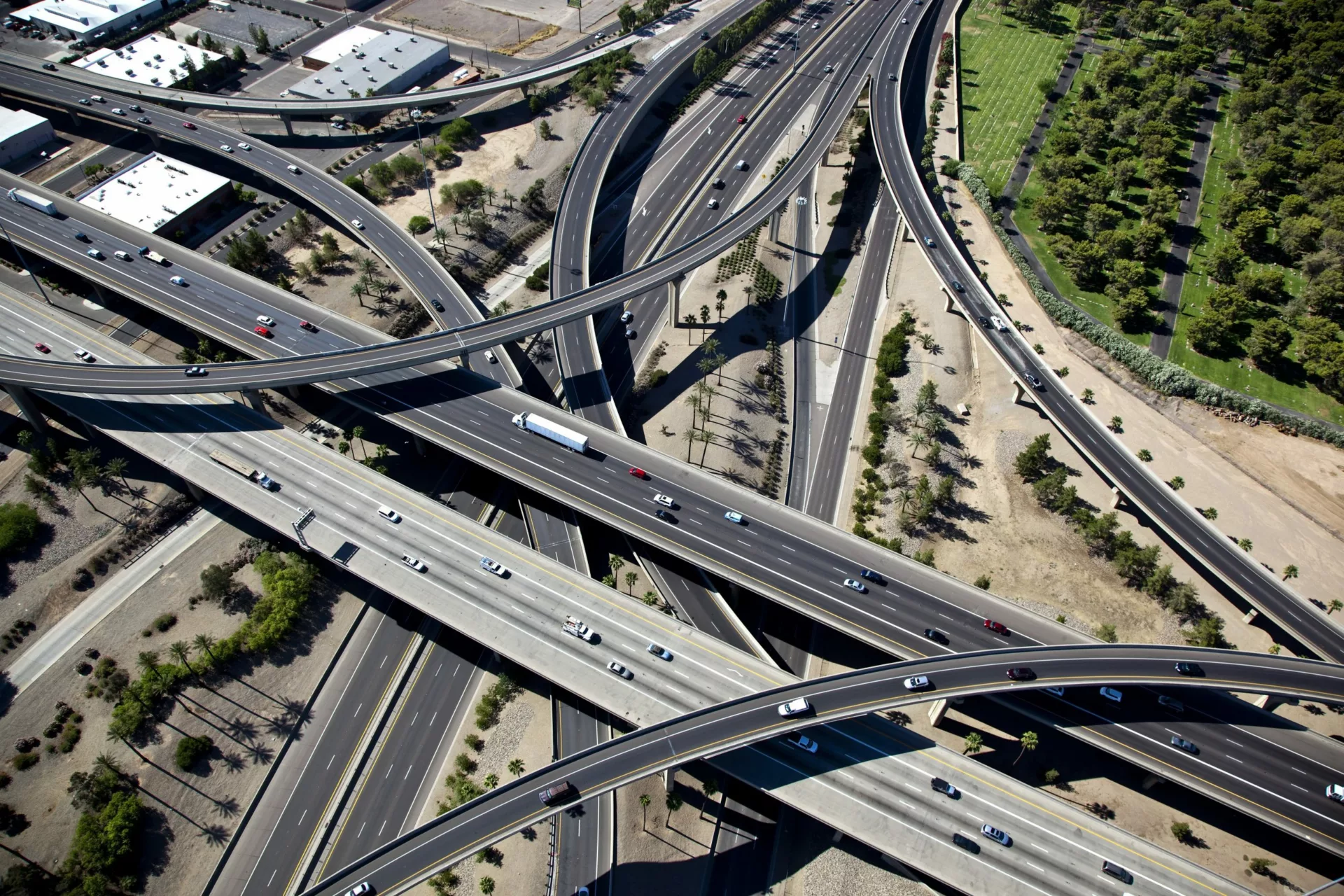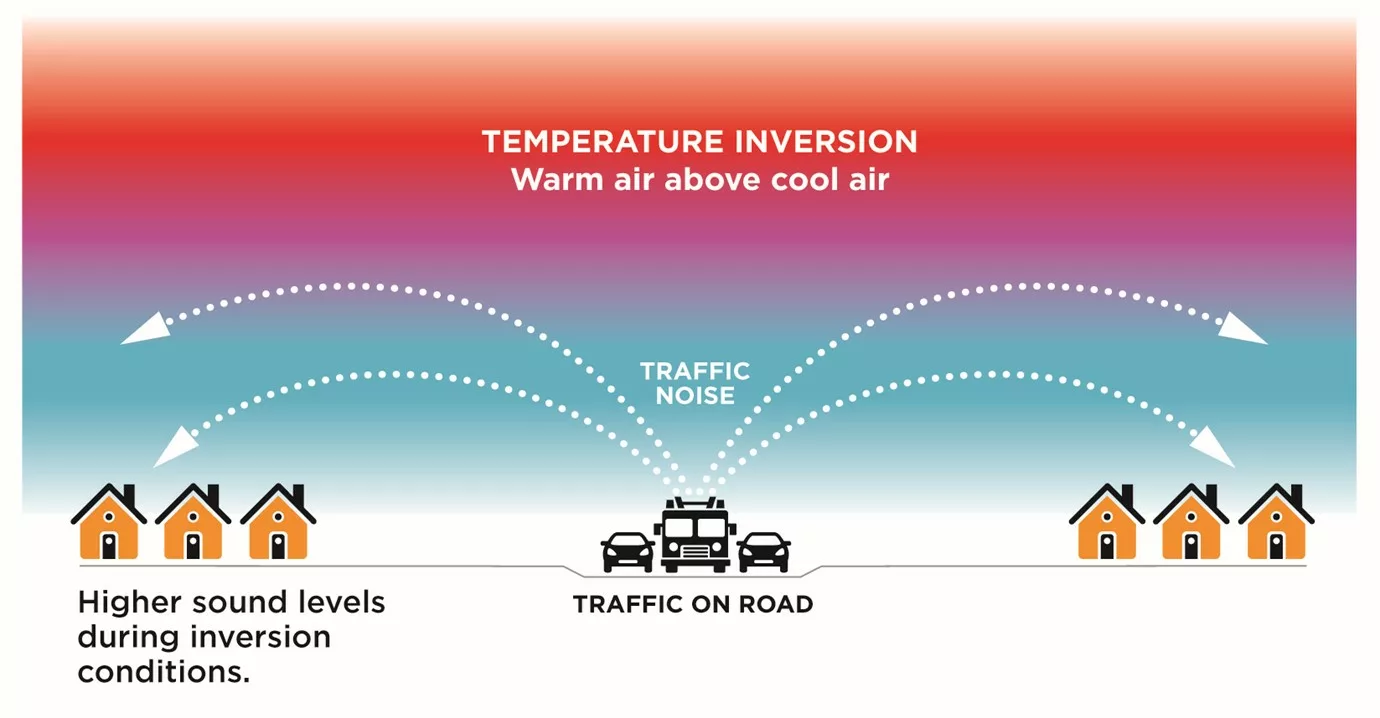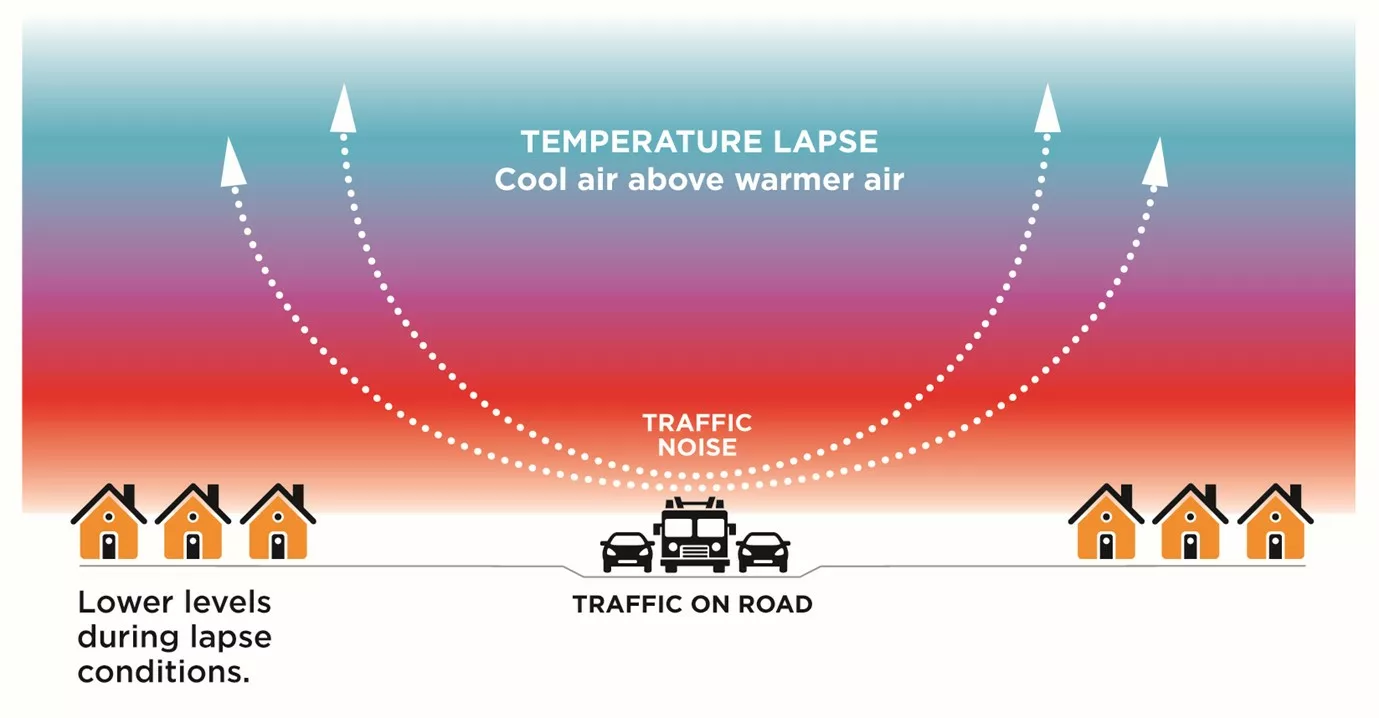State departments of transportation (DOTs) often receive inquiries and complaints from community members about the traffic noise of existing and proposed highway projects and infrastructure. While these agencies implement multiple mitigation strategies, such as noise abatement barriers, their plans do not generally consider the potential impacts of weather.
To deliver guidance on how these atmospheric and temperature-related effects influence the propagation of traffic noise, the National Cooperative Highway Research Program (NCHRP) selected RSG to collect and analyze field data under a range of meteorological conditions and compile these findings in NCHRP Report 882 and supplementary pamphlets that DOTs can adapt for community outreach.
The Challenge
Despite preconstruction noise abatement efforts, state DOTs often receive complaints from communities both far away from and directly behind these barriers. These reports of unusually high traffic noise levels had been observed to increase under certain weather conditions, which is what prompted the research team’s efforts to investigate potential gaps in current traffic noise assessment methods.
The research proposal aimed to build upon previous research by measuring and documenting the impacts of meteorological conditions on roadway noise. The RSGled team was selected primarily for our expertise in acoustical monitoring, analysis, and noise control engineering.
Our research efforts included monitoring and collecting data at two different sites (one with and one without a noise barrier) under varying atmospheric conditions to:
- Measure and record the meteorological effects on roadway noise propagation.
- Provide guidance to identify critical atmospheric parameters that impact this propagation.
- Aid in determining the distances at which these meteorological effects on noise occur.
- Develop best practices around quantifying these effects—and to consider them in analysis.
- Create materials to help state DOT audiences understand how different conditions impact roadway noise levels.
RSG’s Solution
To accomplish the objectives set out by the research report, RSG set up sound monitors up to 1 kilometer away from Interstate 17 in Phoenix, Arizona, in a mostly undeveloped area. While our team measured this sound, they simultaneously recorded the meteorological conditions up to 10 kilometers in the air using multiple meteorological stations and instruments. This produced a comprehensive dataset as the traffic pattern generated near continuous highway noise and information on several different vehicle types and speeds.
Our team also utilized regression analysis to explore the noise-level impacts of a variety of atmospheric effects, such as wind shear, temperature lapses, and inversions, compared to neutral conditions. For instance, although traffic peaks during rush hour, a nighttime or early morning temperature inversion can cause more noise at less heavily trafficked hours. This is because the warm air higher up bends sound downward.
Finally, RSG was tasked with creating outreach materials and analysis tools to educate agencies and the public on how meteorological conditions impact roadway noise. This included the development of the Sound Speed Profiler Tool, which allows state DOTs to better understand impacts at specific locations.
Before this NCHRP report, state DOT models could only incorporate one meteorological condition at most. While it will take some time to find its way into practice at a larger scale, the research and guidance produced by RSG will help agencies better understand planning and decisions around future noise abatement projects.
Download a PDF





